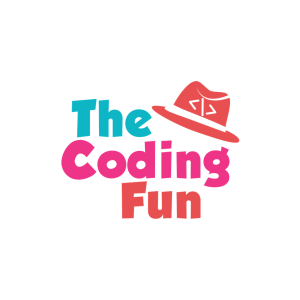Many parents wonder why governments are introducing the coding lessons to school. Why should kids learn coding at a young age? Are we expecting all of them to become software engineers in future? Take a look at the video and let me give you a brief introduction about this trend.
Q: What is kids coding?
A: In sum, kids coding lessons use proper programming tools to teach children organize their ideas and solve a problem. These problems might come from real life, e.g. design a lucky-draw app or a digital birthday card. They might also come from the games, e.g. design a Super Mario game, a star-war shooting game or a car racing game. Children can also use those tools to create a story by adding the backdrop, their characters, dialogues and make them move around.
Q: Why should kids learn coding at young age?
A: Not only are primary school students able to program, but also have fun to do it. Learning programming is not just to cultivate future computer engineers, but an effective way to learn how to learn.
The ability to code computer programs is an important part of literacy in today’s society. When people learn to code in Scratch, they learn important strategies for solving problems, designing projects, and communicating ideas.”
Q: If Scratch is just an “educational” programming language, why don’t have child leap ahead to learn Python directly?
A: Scratch is based on block language, but it also absorbs the concept and functions of the matured programming language, e.g. conditional judge statement, loop, variable, block (function), list, parallel execution concept. Using Scratch, children could concentrate on the design, the logic and structure of their games or stories.
That is right the purpose of letting kids learn programming – “learn important strategies for solving problems, designing projects, and communicating ideas”.
Other matured programming languages no matter Python, Javascript or C++, all of them require strict grammar or we call “syntax”. If it fails, the program cannot run at all. Most of children, even adults, will get stuck in those syntax errors and feel frustrated. Imaging when a kid is beginning to learn a language, if we strictly require the accuracy of grammar, he/she will definitely lose interest and give up speaking this language soon.
Although Scratch is a block-based language with the educational purpose, it is enhancing itself all the way. In Feb. 2019, it released Scratch 3.0, embedding upgraded software infrastructure, and more powerful functions. Meanwhile, it could connect to many other 3rd-party software, such as the popular Lego MindStorms EV3, Lego WeDo 2.0, and Pi Raspberry. If you take a glance at the open community of Scratch website, there are a ton of excellent projects, full of innovative ideas and exquisite design. Our posts analyse a few of them. Take a look and you will find that Scratch is not a “childish” language!
Q: How are thecodingfun courses organized?
A: Thecodingfun courses are organized in 6 levels. we recommend our students begin from level 1 since the junior level courses cover a wide variety of topics and themes, and give students more space for free creation.
Students of different ages are grouped into different classes, so the progress of each class can be customized.
Q: What is the difference between junior and senior level courses?
A: Junior level courses will design one story or game for every course. The students are strongly encouraged to add their own ideas and innovation to their coding work, not have to strictly follow the code provided by the instructors.
The coding project is just like designing artwork. The teacher introduces a theme/knowledge point and the students are give space to develop their own ideas. The best teaching result for a course is that every student designs out different story or game.
For Senior level 2 and level 3 courses, we suggest students to follow instructors step by step to finish all the functionalities of a game. The reason is that those courses are designing more complicated games. If students design their own projects, some knowledge points can not be exercised and utilized well. For those senior levels, students will design their own project at the end of each module to utilize all the learned knowledge flexibly. Similarly, instructors will communicate with the students in and after the class to ensure the final projects are finished with good quality.
Q: How is the pricing structured in thecodingfun?
A: There are 8 lessons in one module and fee is paid before attending the module.
For new students, the first two lessons are charged at trial rate. After that, we charge S$45/session. When there is promotion, the rate might be different.
Q: How is the class structure?
A: We offer small classes. Usually there are 4-6 students in one class. We also encourage pair programming. That is, two children form a study group. When they create their own projects, they can discuss and help with each other when meeting issues. Instructors and class assistant are present to give guidance all the time.
Meanwhile, for each course, we provide quiz questions and feedback for the submitted coding project from each student.
Q: Besides Scratch, are there other courses provided by thecodingfun?
A: Yes, and in the near future. We are developing new courses related to Lego robots. They will be combined with the existing Scratch courses.
Enjoy the coding and have fun!



Thank you for this
LikeLike